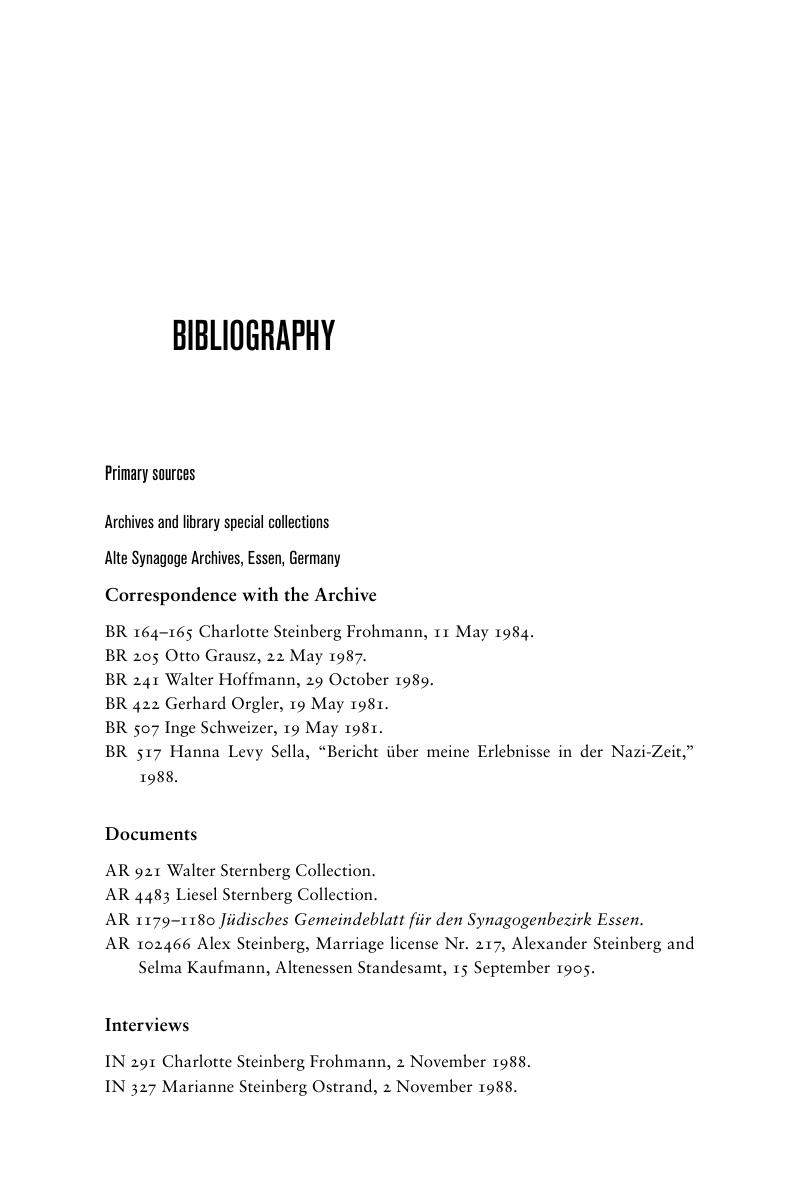Book contents
- Frontmatter
- Contents
- List of figures
- Acknowledgments
- Family trees
- 1 Introduction
- 2 German-Jewish lives from emancipation through the Weimar Republic
- 3 Losing one's business and citizenship: the Geschwister Kaufmann, 1933–1938
- 4 Professional roadblocks and personal detours: Lotti and Marianne, 1933–1938
- 5 The November Pogrom (1938) and its consequences for Kurt and his family
- 6 New beginnings in Palestine, 1935–1939: Lotti and Kurt
- 7 Rescuing loved ones trapped in Nazi Germany, 1939–1942
- 8 Wartime rumors and postwar revelations
- 9 Epilogue
- Notes
- Bibliography
- Index
- References
Bibliography
Published online by Cambridge University Press: 05 June 2012
- Frontmatter
- Contents
- List of figures
- Acknowledgments
- Family trees
- 1 Introduction
- 2 German-Jewish lives from emancipation through the Weimar Republic
- 3 Losing one's business and citizenship: the Geschwister Kaufmann, 1933–1938
- 4 Professional roadblocks and personal detours: Lotti and Marianne, 1933–1938
- 5 The November Pogrom (1938) and its consequences for Kurt and his family
- 6 New beginnings in Palestine, 1935–1939: Lotti and Kurt
- 7 Rescuing loved ones trapped in Nazi Germany, 1939–1942
- 8 Wartime rumors and postwar revelations
- 9 Epilogue
- Notes
- Bibliography
- Index
- References
Summary

- Type
- Chapter
- Information
- Life and Loss in the Shadow of the HolocaustA Jewish Family's Untold Story, pp. 313 - 325Publisher: Cambridge University PressPrint publication year: 2011



